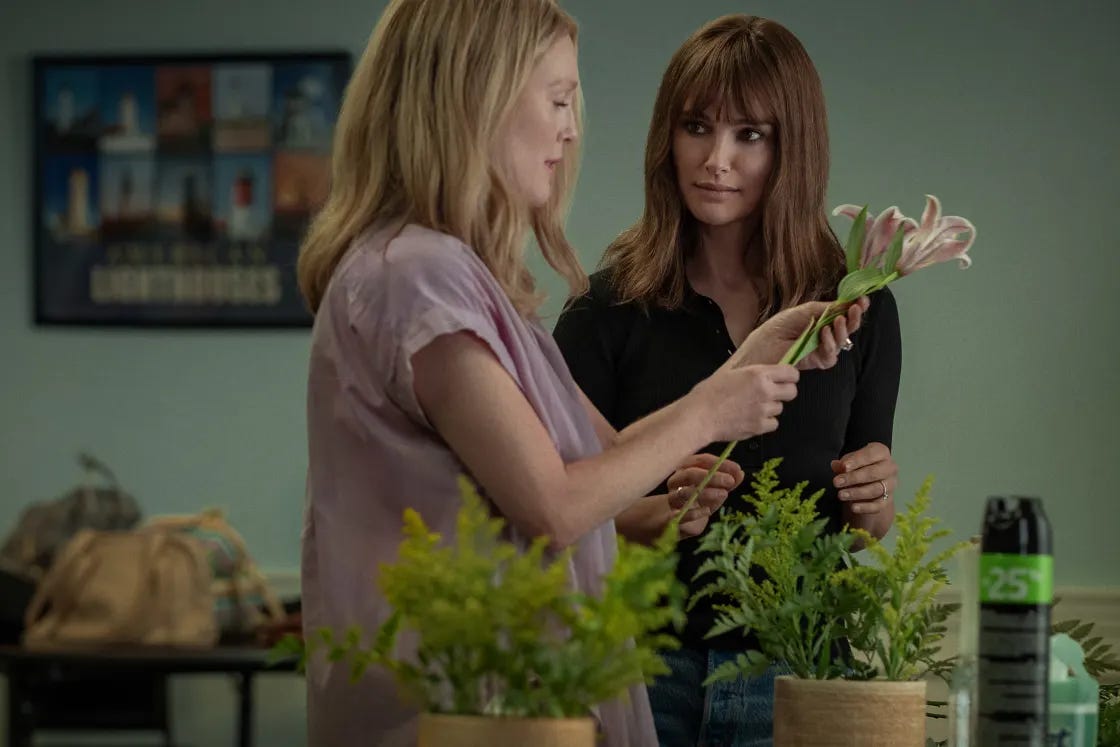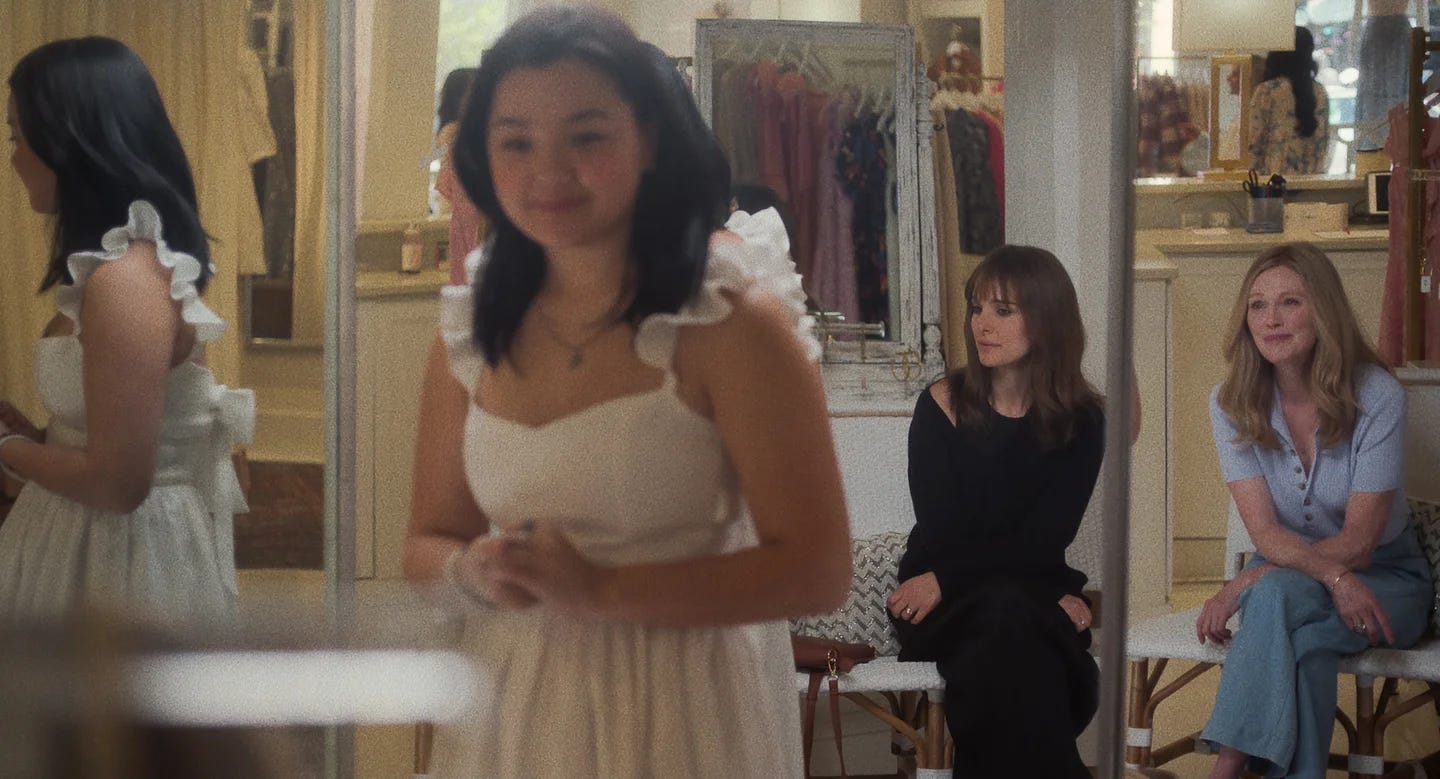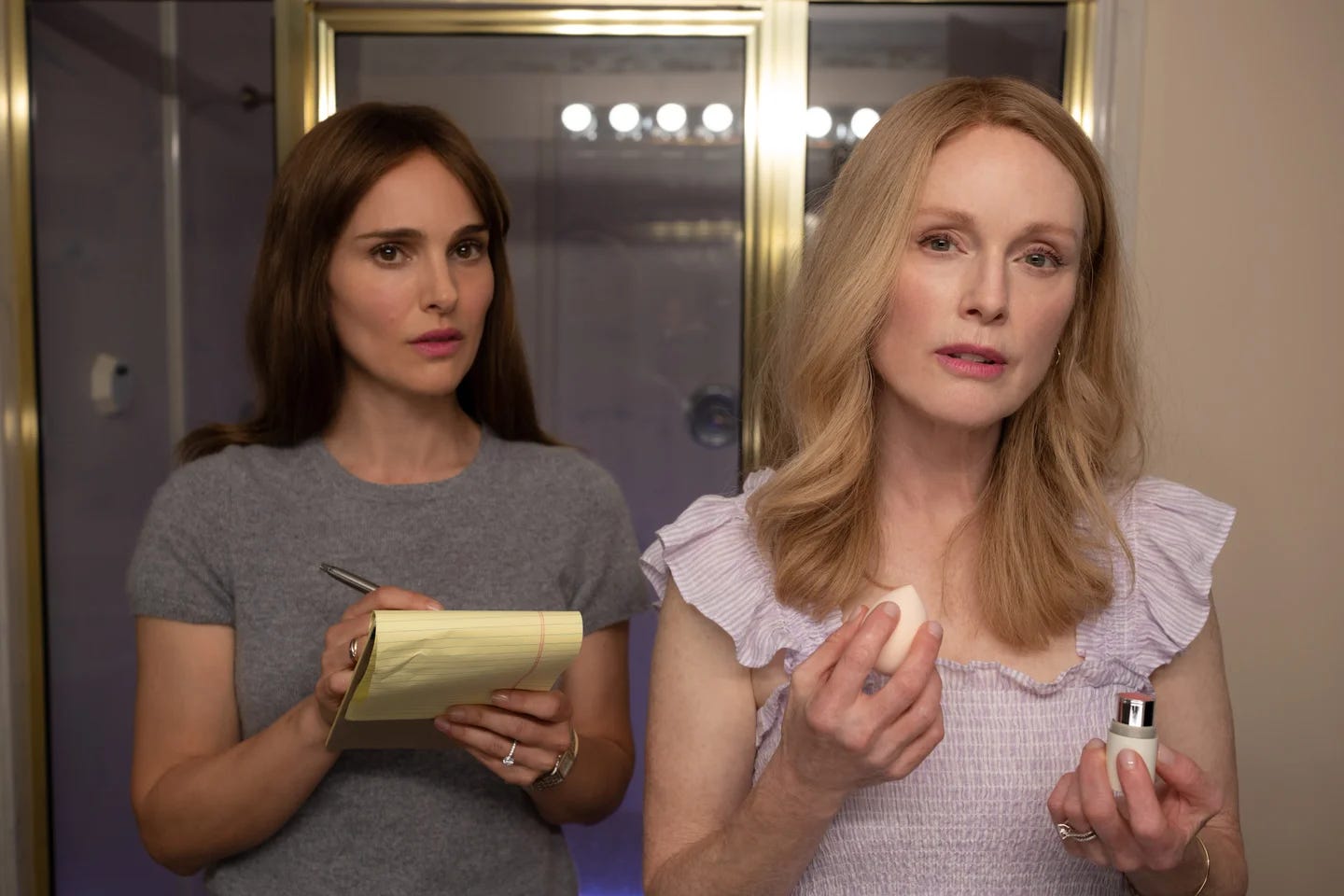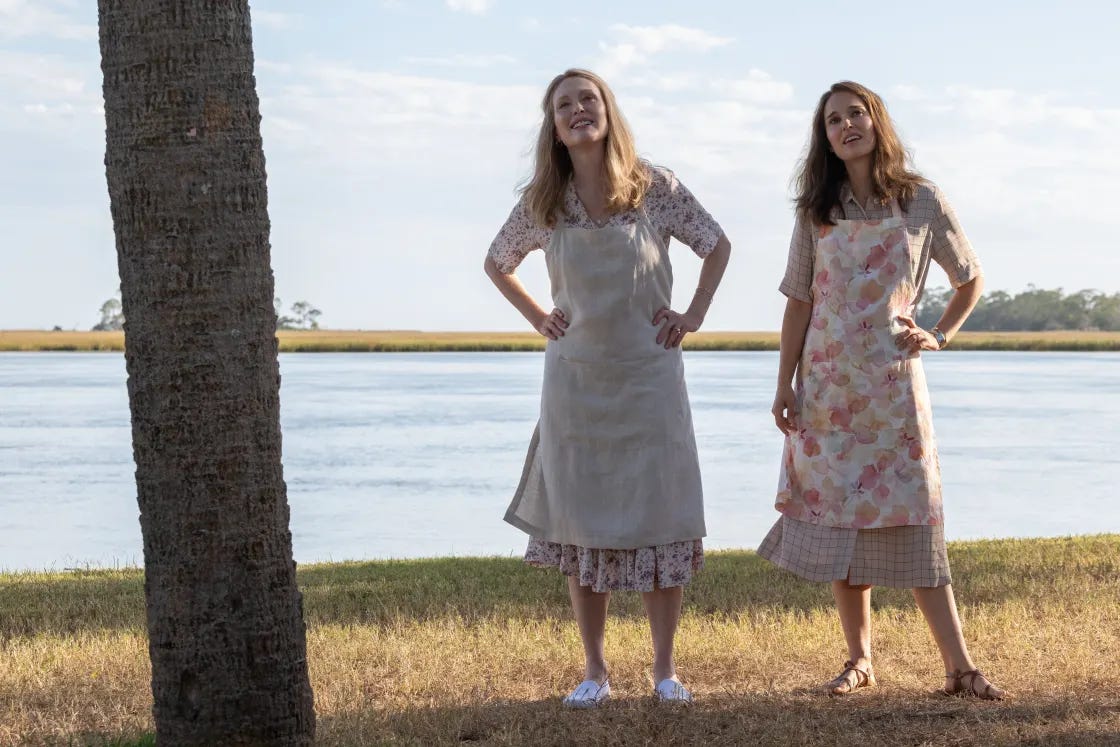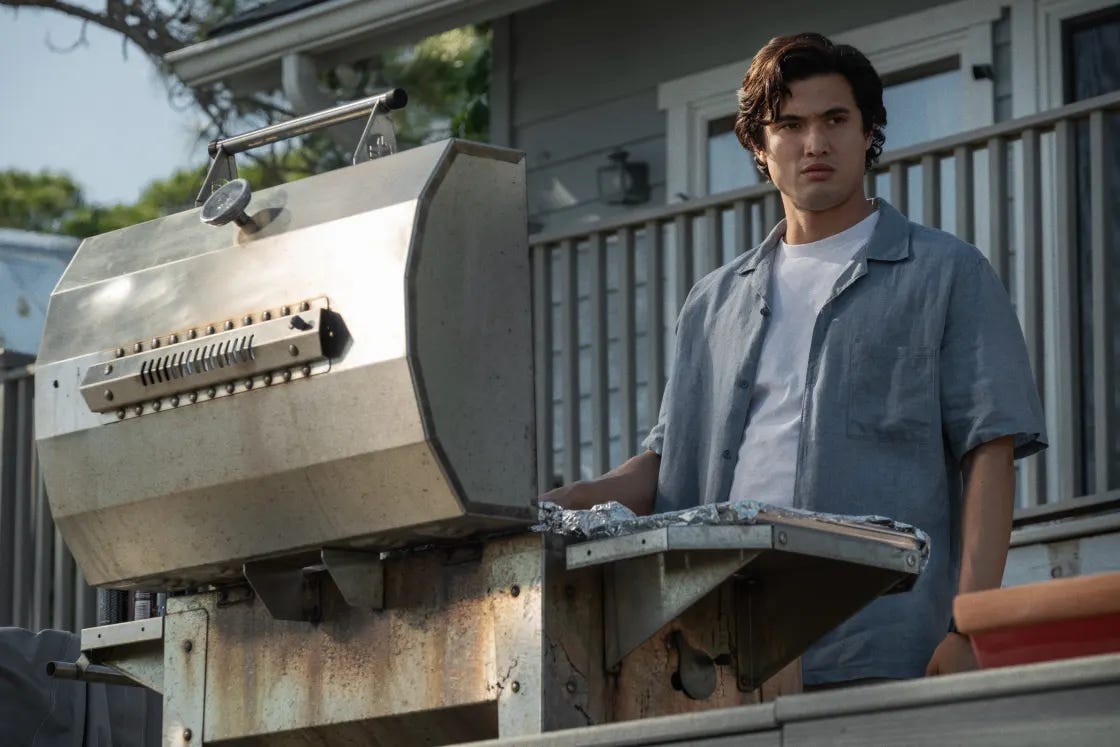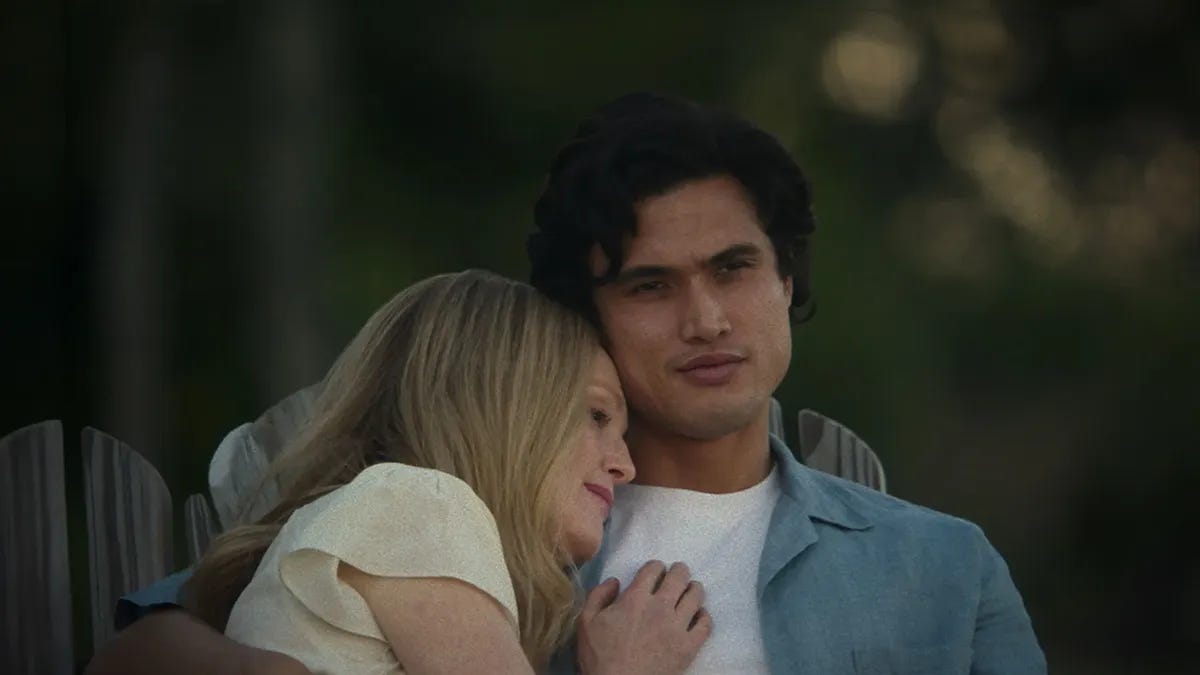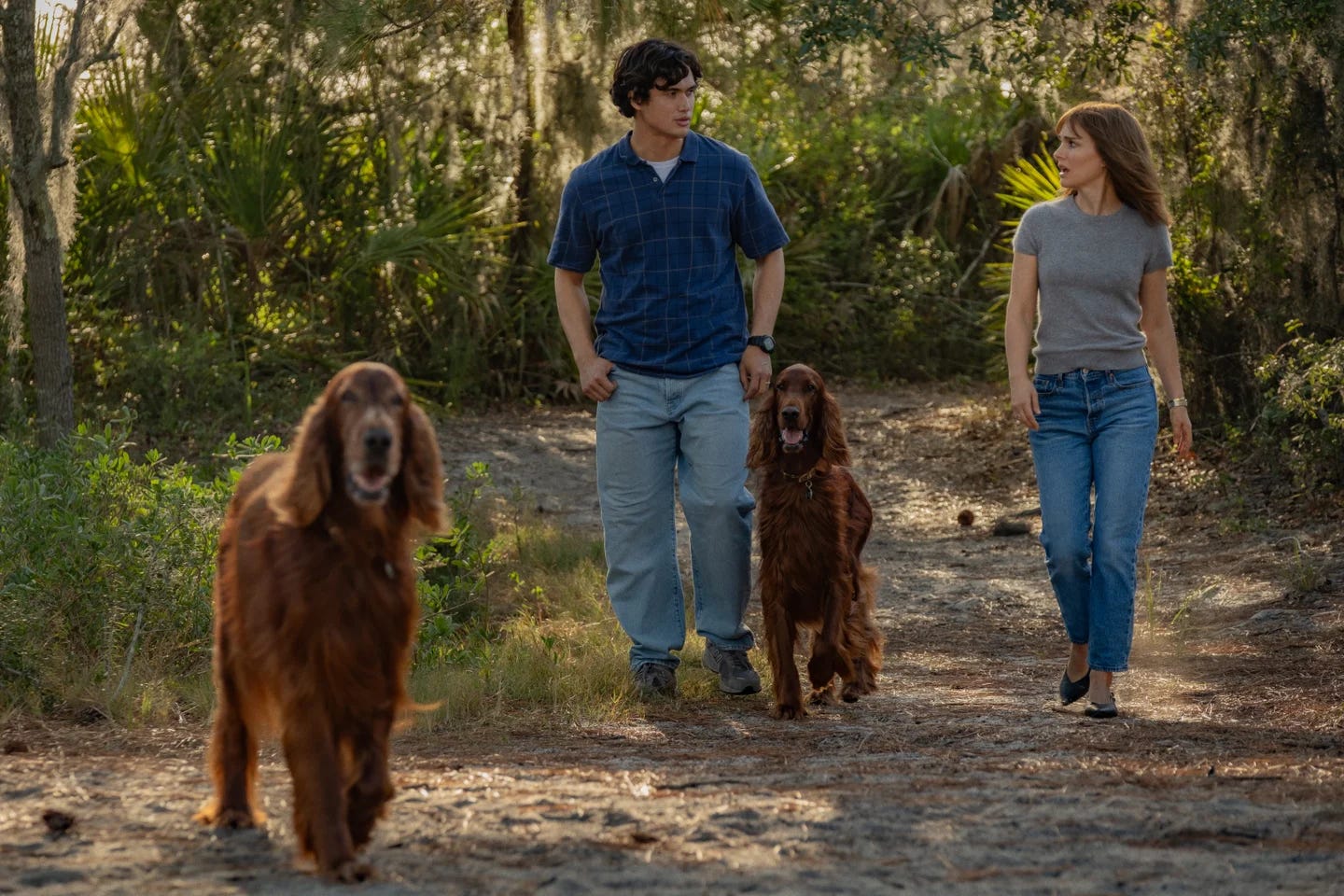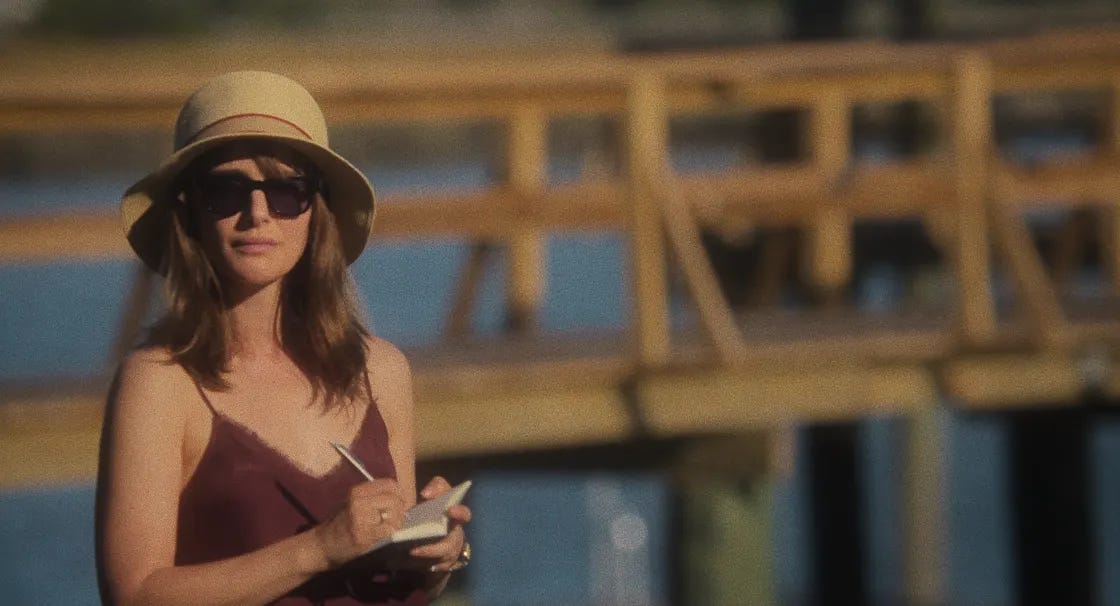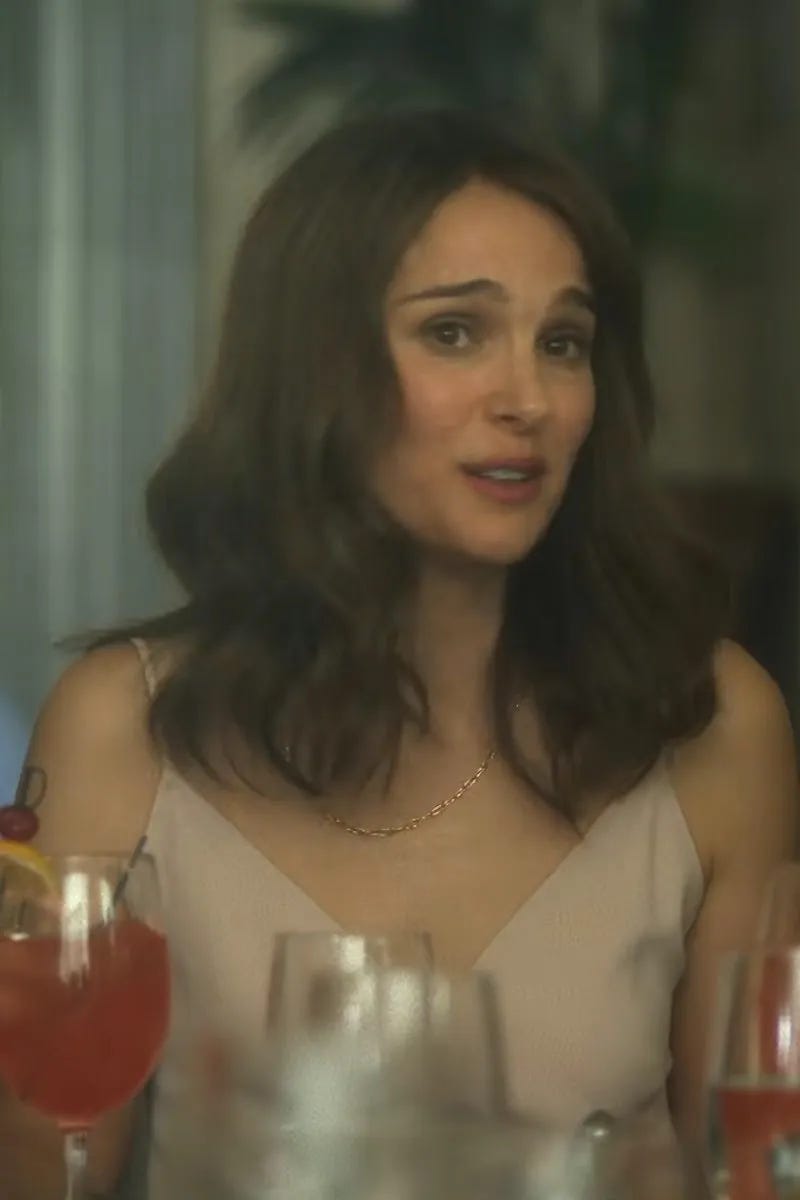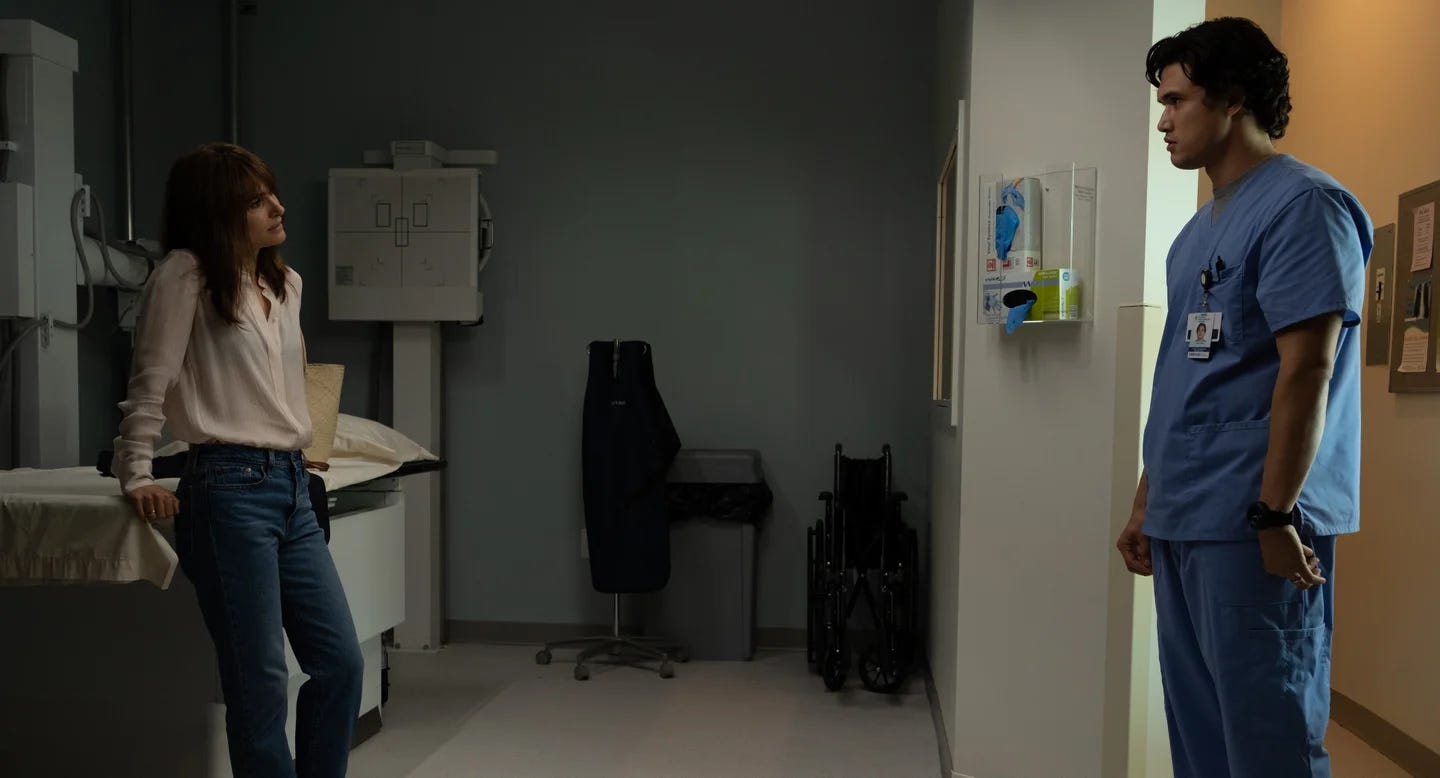I don’t want to reduce an entire movie down to one performance, but oh my god, Charles Melton!! He’s already gotten a Golden Globe nomination for Best Supporting Actor and that Oscar nomination is coming next.
As usual, I will be discussing the fashion and how it helped tell the story, so if you don’t even want to read a whisper of a spoiler, please come back another time.
Anyway, let’s get into it.
May December follows Gracie (Julianne Moore) and Joe (Charles Melton), a couple who began an intimate relationship with one another when Gracie was in her 30s and Joe was her 7th grade student. 24 years later, actress Elizabeth Berry (Natalie Portman) is slated to play Gracie in a movie, so she heads to Georgia to spend a week with the family, because she’s a ~method actor~ and wants to observe and understand her subject.
The movie is based on the true story of Mary Kay Letourneou and Vili Fualaau, however Elizabeth is not a real person and has been created for the sake of the movie.
You might not immediately think that the wardrobe in a movie like this has any meaning, however it’s one of the smartest uses of the wardrobe (by April Napier) that I’ve seen all year. Jean Baudrillard, the sociologist and philosopher, says that “appearances mask reality,” and every character in this movie pretends to be someone they’re not, in one way or another.
Gracie is performing femininity. She acts (says she is) very naive and youthful as a way to come to terms with the decisions she’s made. She says that Joe grew up very quickly and that she was very sheltered, implying that he was in control of the relationship and perused her. We see her constantly saying things like this as a way to victimize her white womanhood, while the actual victim falls to the background. The people in her neighborhood play into her white housewife cosplay so that they don’t have to deal with her. They continue to buy her cakes and come to her parties, while Joe is just mean to live within his trauma.
Her clothing compliments this performance by being very light and aerie. She wears a lot of pastels, floral prints, and things with a softer edge or ruffle. When her and Elizabeth go dress shopping for her daughter, her daughter tries on a dress with ruffled straps, which is a style we see Gracie wear in a clip shortly after. She also tells her daughter that she looks “youthful, like the first day of spring” as she’s trying on white dresses— youth is a very specific thing to point out, especially to a young girl.
Gracie is very sly and cunning, like a fox. Which is funny since she does love to hunt. In fact, the only time she’s not wearing something overtly feminine is when we see her hunting. This also happens to be when her marriage is starting to crack, yet the fit of her clothes is still immaculate, she’s even wearing a Barbour jacket— she still cares about the way she looks even when no one's watching, she still has control.
Joe is performing fatherhood. He’s performing being the perfect husband. He’s performing being the only Korean in a white southern community. Joe acts like a teenager trapped in an adult’s body, because he’s stunted at the age that he lost his childhood. He doesn’t know how to interact with adults, even though he is one, and see’s the idea of love through rose colored glasses. After him and Elizabeth hook up, he’s distraught that she’s being so nonchalant, because he thought they had a connection, but to her, “this is just what adults do.”
We see him wearing a lot of “dad clothes,” like his polo shirt and khaki shorts at the barbecue. Not only is this fitting clothing for the role he is playing, but it’s also clothing you’d see a lot of men in the south wear. We see Joe wear the color blue quite often, which is often associated with sadness and depression. Like I mentioned before, he just blends into the background in a way that victims often do when the predator is being sensationalized, and his clothing is unmemorable in that same way.
His one standout clothing item is the Abercrombie rugby shirt he wears when he’s on the roof with his son. This is a clear reference to his childhood and helps show the parallels between him and his son, mentally and emotionally, during their conversation. The shirt is very washed down, like it’s something he’s owned for a long time, and in the context of the scene, feels like a piece that perhaps brings him comfort.
Elizabeth is performing being a serious actor, but she’s also a city girl. She’s very sharp and precise. April said that Jane Birkin was on the moodboard for her, and we see her wear brands like The Row, Khaite, and A.P.C. Due to the fact that she’s only visiting them for a short amount of time, we can assume that she has a limited amount of clothing in her suitcase. Elizabeth favors neutrals and darker colors. At the barbecue, everyone is wearing red, white, and blue, so she does that in her own way, by wearing a deep maroon dress, with an Hermès hat and Saint Laurent sunglasses.
Her style changes over time as she observes Gracie, but she never gets it exactly right. This is probably partially not to scare her, but also shows that city edge through her more architectural and sleeker silhouettes and patterns; Gracie’s dress has flowers, Elizabeth’s is geometric. She starts to wear pink lipstick, moves her bangs to the side, and starts wearing lighter colors. We can assume that the light pink dress she wears to dinner is something she bought during her time there, because it isn’t something that makes sense in her normal wardrobe.
Elizabeth also wears a sheer pink blouse to go visit Joe at work, which feels very nasty and manipulative, especially because she knows that he’s in a vulnerable place. At first it feels like she might feel for him, but as her “method” preparation continues, the lines of morality blur more and more.
I also wanted to quickly touch on Georgie, Gracie’s son. We only see him a couple of times, but Georgie was friends with Joe in school, and it’s obvious that the affair affected him too. Joe acts like a child pretending to be an adult, but Georgie still dresses and acts like a young boy, instead of a man in his 30s, showing the different way trauma can affect people.
Clothing is such a useful tool in telling a story, that is often undermined and not taken seriously, as many fashion historians and conservators know. Grandiose period pieces are always fun to drool over, but it’s the more subtle costume work, like in May December, that always unexpectedly gets me, because it’s not always a “necessary” tool. With that being said, I’d love to know your thoughts on the costumes, but also on the movie in general, so don’t be afraid to leave a comment or DM me on Instagram!
TTYL!!!
xx





